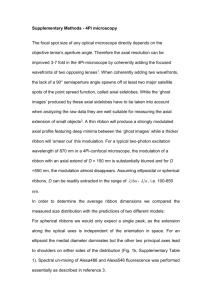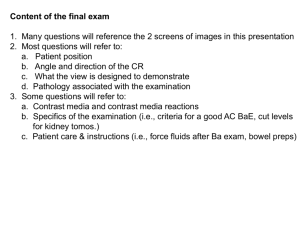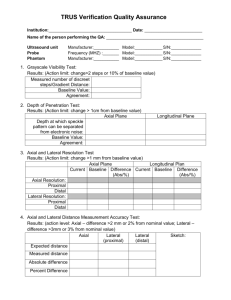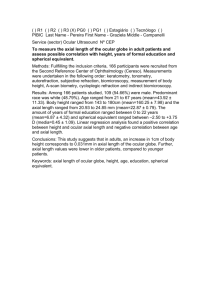Section 3 Cranial Anatomy and Pathology Image 1
advertisement
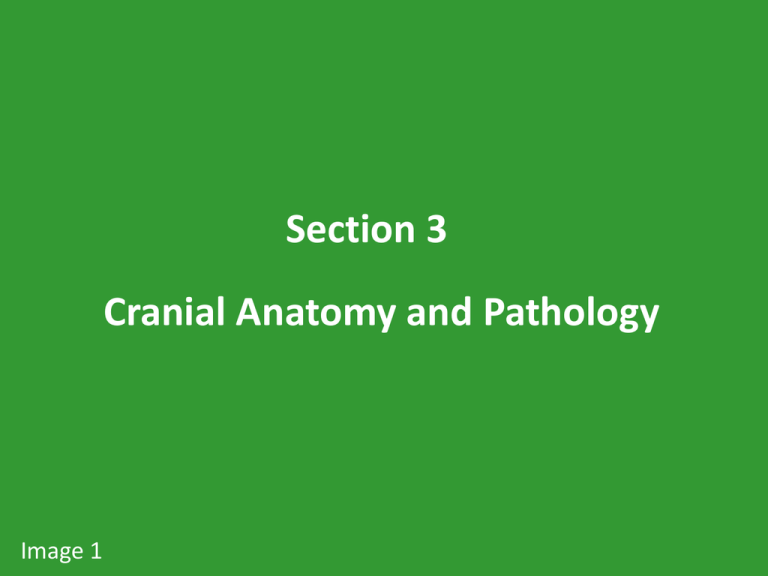
Section 3 Cranial Anatomy and Pathology Image 1 Typical Causation: Trauma Image 2 • Open head injury- dura mater pierced • Closed head injurydura mater intact • Contrecoup effectbrain injury at side of impact, but could be on opposite side • Most common reason for youths This slide is essentially an FYI. However, it does provide insight to the concept of closed versus open head injuries. Axial CT Image Anatomy Calcified pineal gland Calcified choroid plexus Image 3 When blood from a trauma irritates brain tissues, it causes swelling. This is known as cerebral edema. The pooled blood collects into a mass called a hematoma. Axial CT Image Image 4 Bilateral intraventricular hemorrhage of the lateral ventricles Anterior horn of lateral ventricle Third ventricle Posterior horn of lateral ventricle Image 5 Image 6 Anatomy Falx cerebri Axial CT Image Frontal horns of lateral ventricles Third ventricle longitudinal fissure/ interhemispheric fissure. The falx cerebri, a dural brain covering, lies within the medial longitudinal fissure. G G Ignore the yellow arrows. G = gyri Image 7 An Axial MRI Image Image 8 The “star burst” effect with radiating rays from the star center seen in this coronal CT image is referred to as a “beam hardening artifact.” Lens Globe Medial & Lateral Rectus Axial CT Images Optic Nerve Retro Bulba Fat Axial CT Image Image 9 Image 10 Axial CT Image Limit your review of this slide to the labeled/identified anatomy Image 11 Axial CT Image Image 12 These are images of an Egyptian Mummy. What is missing and why is it missing? Image 13 Limit your review to the labeled/ identified anatomy An MRI image Image 14 Nasal Bone Nasal Septum Eye/globe Ethmoid Sinus Maxillary Sinus Sphenoid Sinus Foramen Ovale Clivus Carotid Canal Posterior Fossa An Axial MRI image Edema of retro bulba fat and surrounding fat within the orbit (encircled in red) The yellow arrow points to appearance of normal fat. Image 15 Image 16 Soft tissue window and bone window seen in an Axial CT scan Vertex fracture as seen in an axial CT scan Image 17 Image 18 Fracture in the base of the skull as seen in an axial CT scan. A pilot scan allows for correct position check and establishes the range if slices. Image 19 The red arrows are pointing to______________ in this axial ct scan? Image 20


